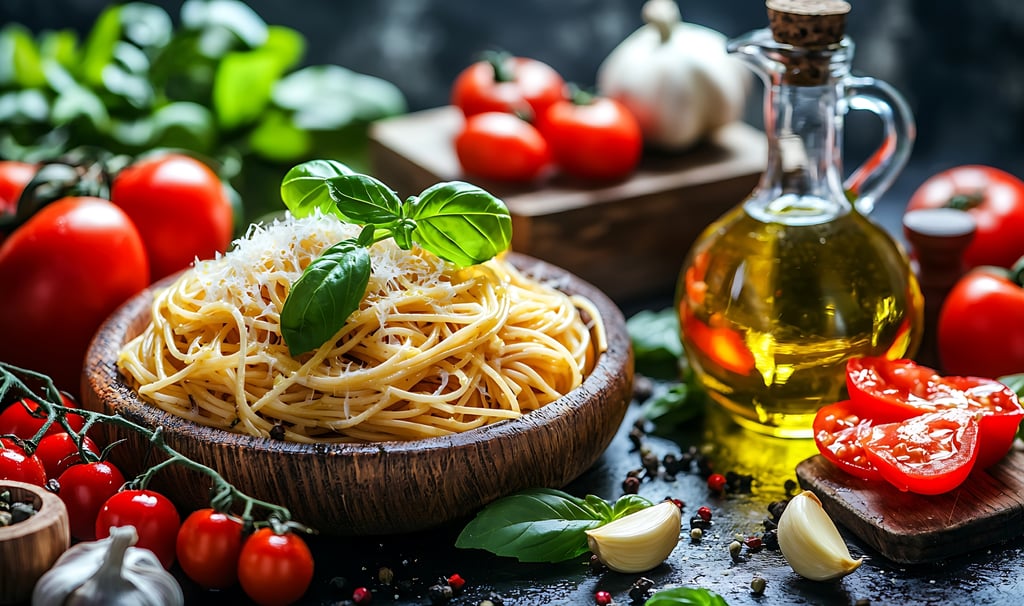Italian Food at a Glance: Essential Menu Guide
Italy isn’t just a country—it’s a table filled with flavors, tradition, and a passion for food that brings people together. The Italian menu is both simple and rich, celebrating fresh ingredients and regional variety. Here’s a quick look at the essentials you’ll find when exploring authentic Italian dining.
8/23/20251 min read


🍝 Key Facts About the Italian Menu
1. Structure of a Traditional Italian Meal
Antipasto – Small bites before the main meal, like bruschetta, cured meats, or cheese.
Primo – First course, often pasta, risotto, or soup.
Secondo – The main dish, usually meat or fish.
Contorno – Side dishes such as vegetables or salads.
Dolce – Dessert, from tiramisù to panna cotta.
Caffè & Digestivo – Espresso and sometimes a liqueur like limoncello to finish.
2. Regional Variety
North – Creamy risottos, polenta, rich cheeses.
Central Italy – Pasta classics like carbonara and Florentine steaks.
South & Islands – Tomato-based sauces, seafood, olive oil, and citrus.
3. Pasta Is Not the Main Course
Contrary to popular belief, pasta is typically a primo, not the main dish.
4. Bread Isn’t an Appetizer
In Italy, bread is served plain at the table to accompany the meal—not with butter or oil.
5. Seasonal & Fresh Ingredients Rule
Menus change with the season; Italians take pride in eating what’s fresh and local.
6. Simplicity Is Key
Italian cooking celebrates minimal ingredients with maximum flavor—often no more than 3–5 per dish.
7. Drinks Pair Naturally
Wine is common, paired with the region and meal.
Aperitivi (like Aperol Spritz) before eating, digestivi after.
✨ Final Bite
The Italian menu is a celebration of life itself—unhurried, flavorful, and meant to be shared. Whether you’re enjoying a rustic trattoria in Tuscany or fine dining in Rome, you’ll always find food that tells a story.
Contact us
Copyright © 2025. Ralnoscape All rights reserved.
Destinations
Resources


Follow us
This website uses affiliate links which may earn a commission at no additional cost to you
